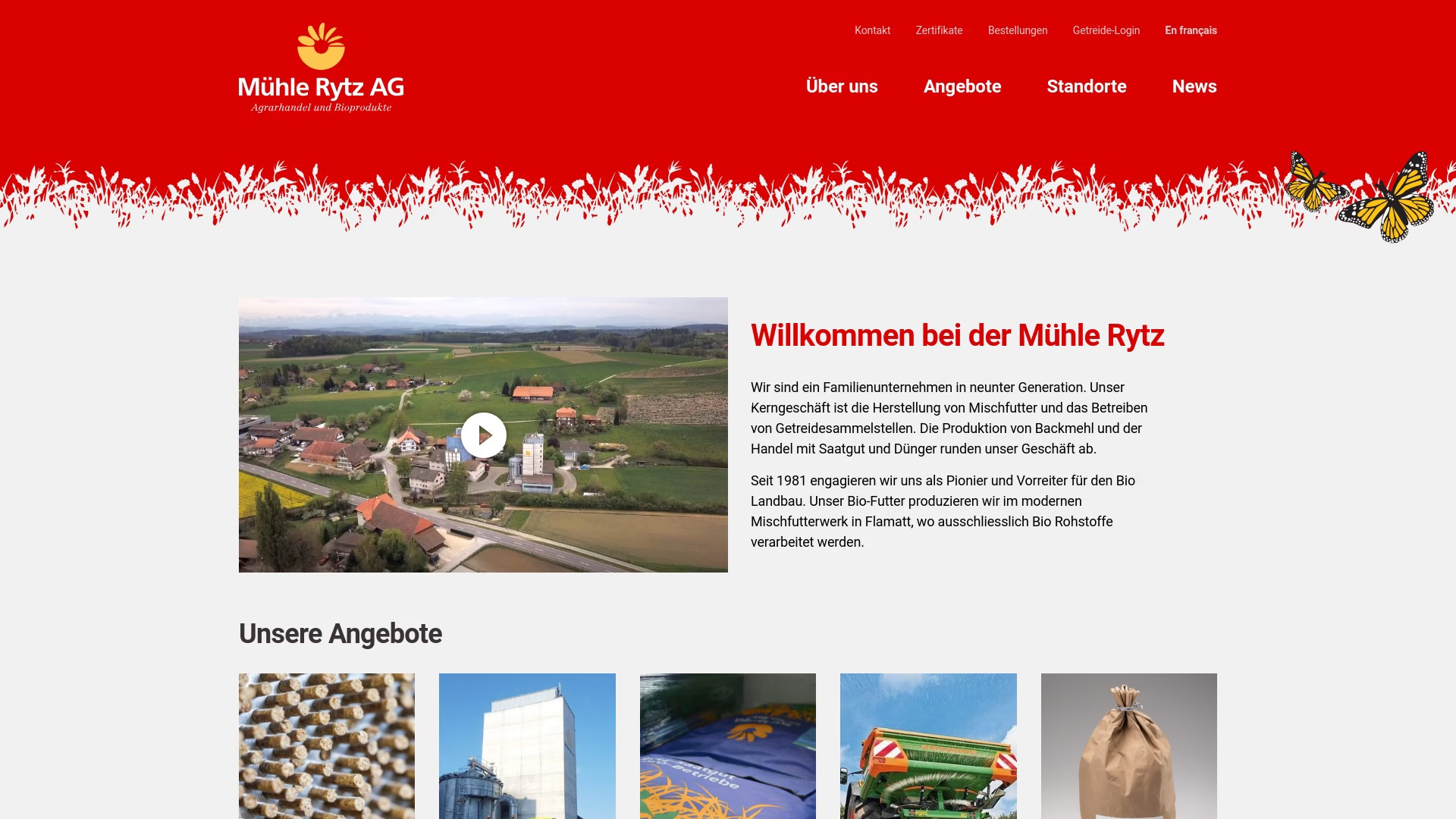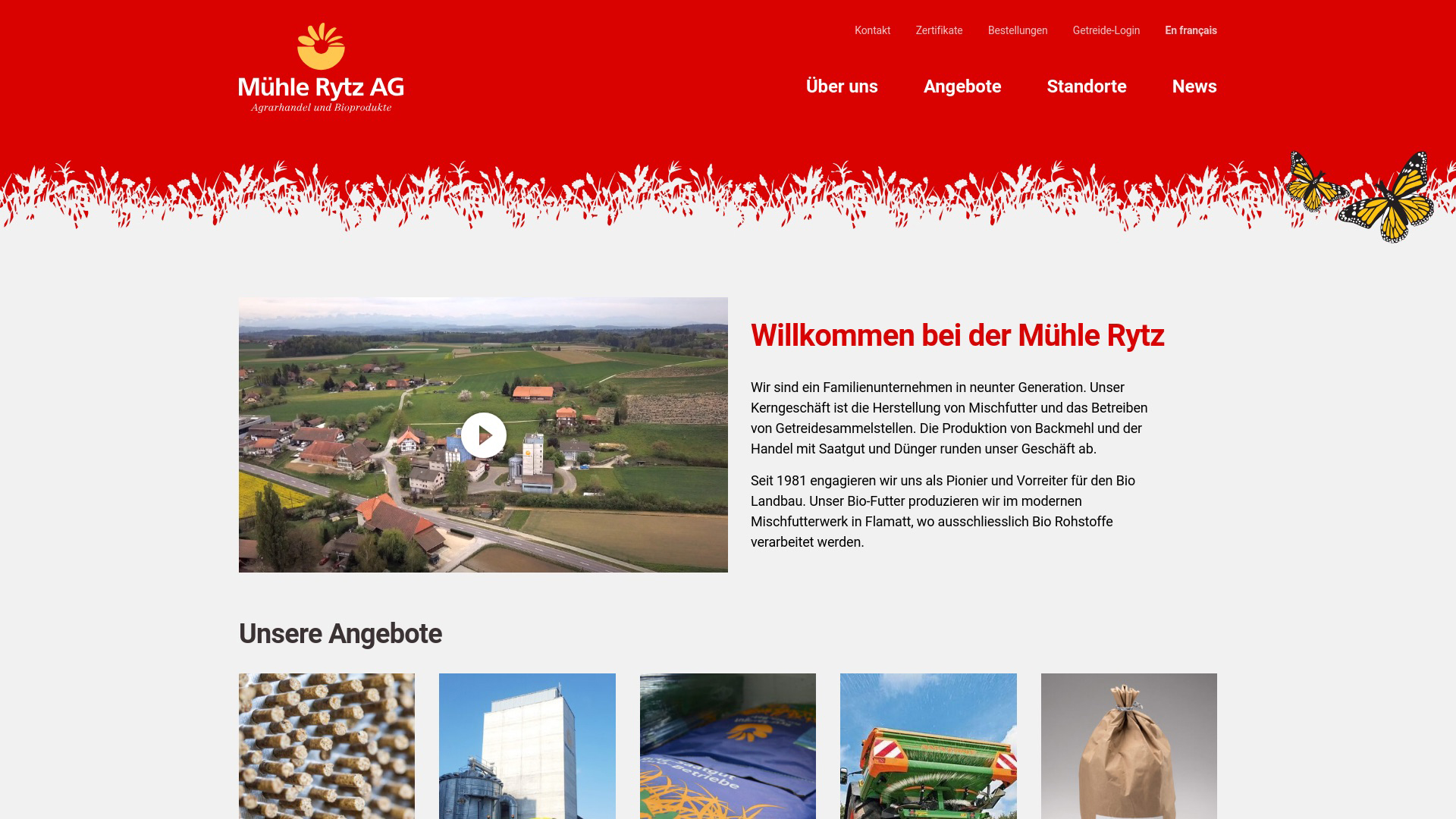The Mühle Rytz milling company on the unofficial border between German- and French-speaking Switzerland is one of the oldest companies I have worked for. The mill has been run by the same family since 1768 at a location that dates back over 1,000 years – that makes it even older than the Swiss Confederation.
However, the historical heritage does not mean that the company is not progressive. After discussions with an external expert about the technical possibilities, the customer decided to have their new website implemented with the standardised, maintained and extensible WordPress content management system.
With over 20 years of experience in design and development, I am the ideal partner for this project. Together with the client, I was able to develop and realise the concept for the content as well as a graphic design based on the new corporate identity.

I developed the website using a hybrid WordPress theme approach. The content of the website and recurring areas such as the header and footer can be fully managed by the client using the WordPress block editor, while a robust and long-lasting PHP base, which has been continually developed over more than a decade and independently of individual projects, forms the technical basis for the customised WordPress theme.
The design was specifically created to combine standard WordPress content elements with content developed specifically for this project, using React (for the block editor) and server-side rendering for dynamic content. Thanks to the modular approach, all content elements and visual building blocks can be reused flexibly throughout the website.

The multilingualism of the website was realised with the proven third-party plugin Polylang Pro, so that the website provides an informative and constantly updated resource for customers on both sides of the unofficial language border. Although the client has a technically skilled person to maintain the website, Say Hello continues to support and advise the company as required. Thanks to extremely sound development practices, only a few minimal compatibility adjustments have been necessary since the project was launched.

